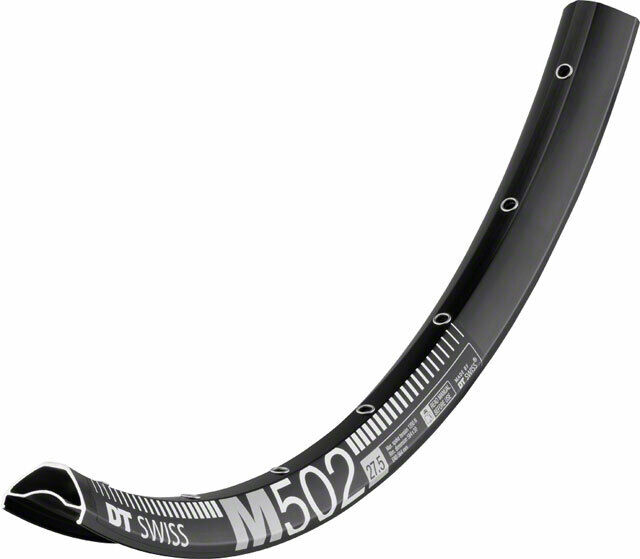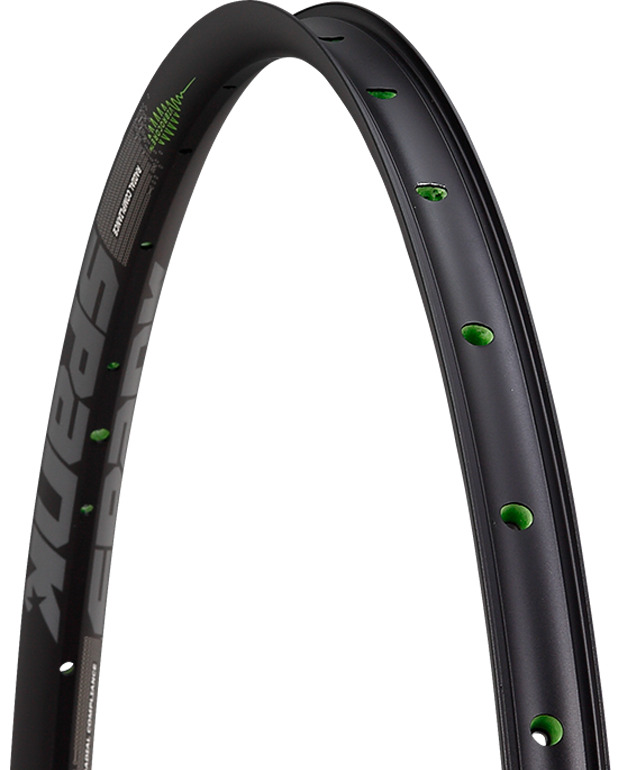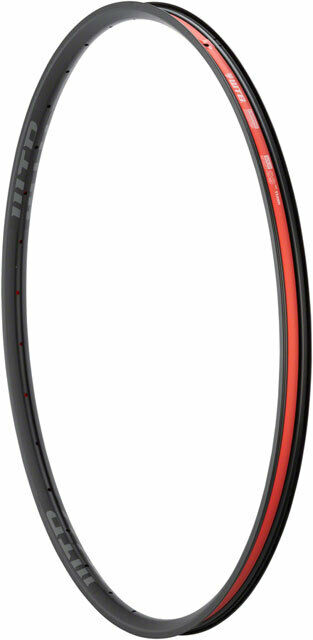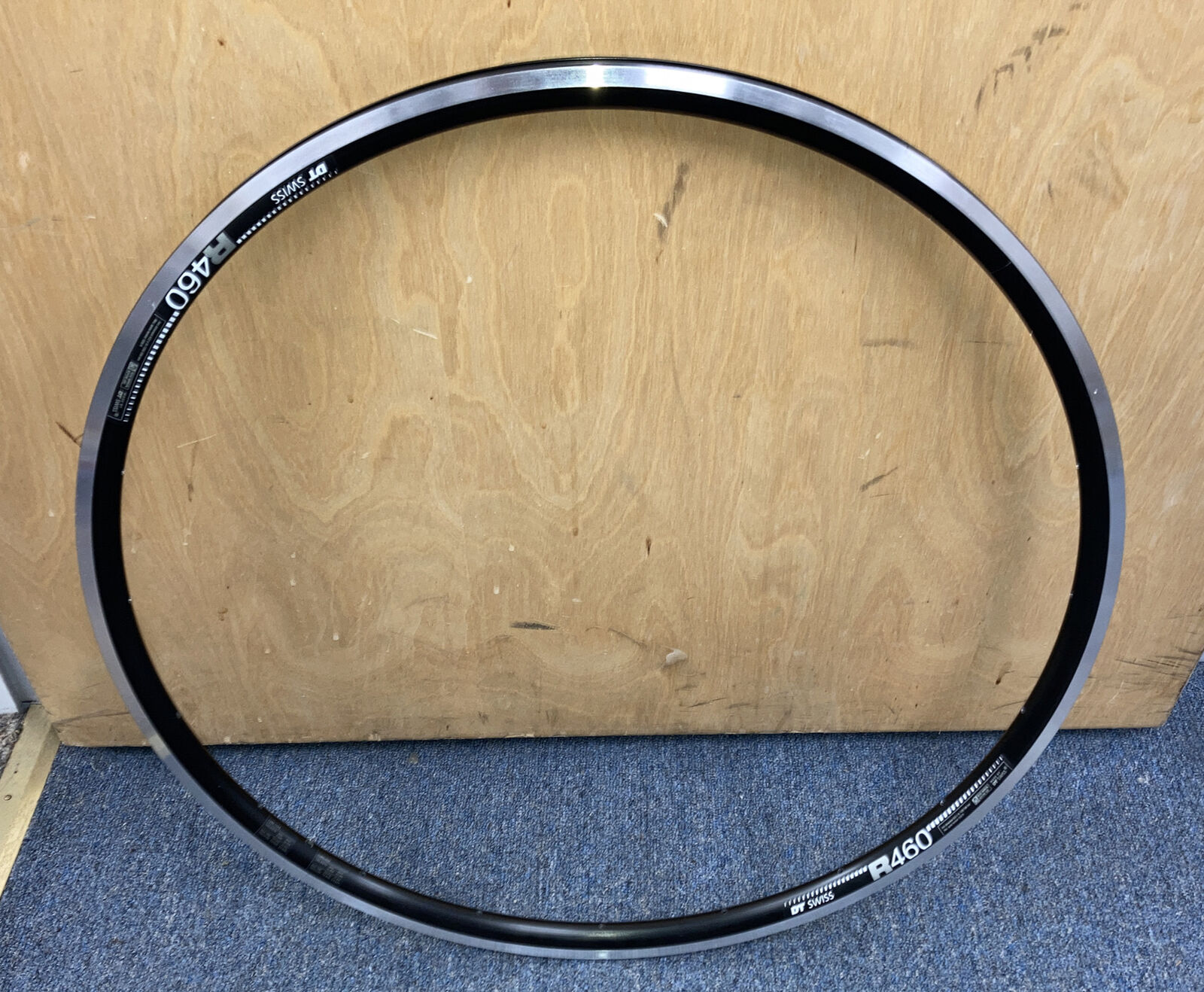-40%
Pair of New-Old-Stock 36-Hole ALEX Linus-II 26" Clincher Rims w/Schrader Valves
$ 26.39
- Description
- Size Guide
Description
Pair of New-Old-Stock 36-Hole ALEX Linus-II 26" Clincher Rims w/Schrader ValvesThank you for your interest in this item and please visit our store for other offerings. We have very reasonable shipping terms and combine orders to save money (for customers) on shipping costs. We also maintain customer friendly return/refund/exchange policies.
Product Description:
This offering is for a matched pair of new-old-stock ALEX Linus-II 26" clincher rims with 36 holes (w/o eyelets). Rim labeling indicates these rims are made from a 6XXX series heat-treated aluminum alloy (6061-T6 to be more specific). They are bike shop quality rims with a gray finish and probably best suited for road or light-duty mountain bike (or equivalent) applications.
Some technical specifications include the following...
Rim type:
36-hole clincher w/single wall and schrader valve
Rim size (diameter):
26" (or 559 mm)
Rim width (inner/outer):
19 mm / 24 mm
Rim height:
17 mm
Weight (Park hanging scale):
1 lbs 15 oz (or 0.88 kgs) for the pair...so 15.5 oz (or 0.45 kgs) for each rim
Other notes:
These rims include safety grooves in each sidewall braking surface to help assess rim wear over time. It's our understanding a rim with these grooves is considered unsafe to ride when the safety groove is no longer visible (as a result of repeated braking that eventually wears down the sidewalls of a rim).
As noted above, this is an entry point in a pair of bike shop quality 26" rims in new-old-stock condition. I am selling them in pairs to help offset the relatively high shipping costs (because I can ship a pair of rims for nearly the same shipping charge as just one rim).
As for condition, these rims are new and unused, but came to us bulk packed, so please expect some shopwear (scuffs and scratches). I am also seeing evidence of lacing, which is consistent with what I was told from a supplier. More specifically, I purchased complete wheels, rims and hubs (all new-old-stock) from a supplier, but was alerted to the fact that many of the hubs and rims had been previously built up into complete wheels. Although, at some point selected wheels were "disassembled" and stored as rims and hubs. I was not given a reason why, but I can confirm when I compare these component parts to the complete wheels, they look to be in identical (new-old-stock) condition.
Supplemental discussion…conventional (older stock) wheel design…
Our expertise when it comes to wheels is really no better than an amateur or enthusiast. Although, we still wanted to share a few thoughts and observations with respect to wheels based on our limited experience. This discussion is probably best characterized as only providing basic information, but hopefully some folks still find the information beneficial.
Rim:
Double-wall rims tend to be stronger (although to what degree is often debated...and subject to other factors like rim design and lacing), because there is an additional interior wall connected to the sidewalls. Single-wall rims are usually lighter and not as strong/durable, because they do not have the added interior support noted in a double-wall rim. Taller/deeper rims tend to be more aerodynamic, but the trade-off is they are generally stiffer. We measure the depth of a rim by taking a rim height measurement...so the higher this number, the greater the rim depth. The number of spoke holes contributes to the strength of a wheel...with more spokes generally resulting in a stronger wheel. There can be some weight savings with rims designed to accomodate fewer spokes, but the savings is usually minimal, because thicker/heavier rims are generally needed to compensate for fewer spokes. Good quality rims will also include eyelets at spoke holes to reinforce this area of the rim against cracking/failure when the wheel is under stress. Additionally, narrower rims are spec'd with narrower tires that usually need to be inflated to a higher pressure. This too generally results in a faster wheel with less rolling resistance, but the trade-off is a harsher ride.
Spokes:
The size of a spoke is generally specified in terms of it's wire gauge. The lower the wire gauge, the greater the spoke diameter. As a result, rims built with spokes having a lower wire gauge are generally going to produce stronger wheels. Additionally, spokes machined with a uniform wire gauge are referred to as straight gauge, while spokes machined with multiple wire gauges (generally a lower gauge/thicker wire at the ends and a higher gauge/thinner wire in the middle) are referred to as butted spokes. The latter provides benefits similar to those realized with butted frame tubes. More specifically, the thicker wire at the spoke ends improves strength at the high stress areas of a wheel. While the thinner wire in the middle provides modest weight savings and some added resiliency against direct/localized stress on a wheel. In other words, a thinner wire gauge at the middle of a spoke allows for some added flex in a wheel, which permits some distribution of localized stress to neighboring spokes. This effect is subtle, but appears to have some merit in reducing the likelihood of rims cracking around spoke holes.
Spoke pattern (lacing):
Conventional spoke patterns are labeled according to the number of times a spoke crosses other spokes connected to the same flange on a hub. For example, a "cross-3" pattern is probably the most common among conventional (old stock) wheels and describes a wheel where each spoke "crossess" three other spokes on it's way from the rim to the hub. This conventional spoke pattern is also referred to as a semi-tanget pattern, because spokes generally leave/enter the flange area of a hub at (or near) a tanget. Higher cross rates/numbers generally result in a wheel that effectively handles the twisting forces generated from low gear pedaling at high effort or the heavy use of hub brakes. A "cross-0" pattern (also known as radial lacing) is where spokes enter/exit a hub flange at a near perpendicular angle. As a result, no spokes cross each other when lacing in a radial pattern. This allows for shorter spokes and a slightly lighter wheel, but there are some strength/build issues associated with radial lacing that generally limits this pattern to front wheels only (and again, this discussion is focued primarily on the conventional/older stock wheels).
I understand we have only begun to touch on wheel design with the above comments, but hopefully the basic information is a good starting point for some folks in the beginning stages of shopping for wheels.
Terms and Conditions:
You may visit our store by clicking on this
"Store Home Page"
link and please note the product categories on the left side of our
"Store Home Page"
.
Note to domestic customers regarding oversized package shipping...
For domestic packages (within the continental US), FedEx Ground or FedEx Home Delivery Service generally offers the lowest shipping rate for oversized packages (frames, wheels, etc.). Unfortunately, our experience also indicates these FedEx services are generally among the slowest of the shipping options. As a result, we will include USPS Priority Mail service as an alternative, as this service is usually faster within the continental US (but more expensive). Finally, for those that live outside the continental US (i.e., Alaska, Hawaii and the US Territories), USPS Retail Ground, Parcel Select Ground and Priority Mail services represent the best value (with Priority Mail offering the fastest service).
Note to international customers regarding oversized package shipping...
International shipping requirements vary for larger packages (including size limitations from country to country). As a result, international customers should contact us before purchasing larger items (frames, wheels, etc.). We are then able to research shipping options to determine if we are able to ship a particular oversized item to your country and then provide an accurate shipping quote. This way we will avoid any confusion or misunderstanding with respect to international shipping of oversized packages.
Note to international customers regarding customs...
We also apologize to those that feel their country import taxes, duties and brokerage fees are excessive. As a small US business, we are required by customs' laws to declare each order as a retail sale. Additionally, the declared order value must be equal to total store purchases and/or winning auction bids (less any shipping costs, as these are not considered in the declared value). As a result, each customer will be responsible for paying his/her own country taxes, duties and brokerage fees, which will be collected upon delivery. Again, we aplogize for these additional costs, but we cannot afford the penalties and fines that come with breaking customs' laws...so we have to strictly abide by them.









